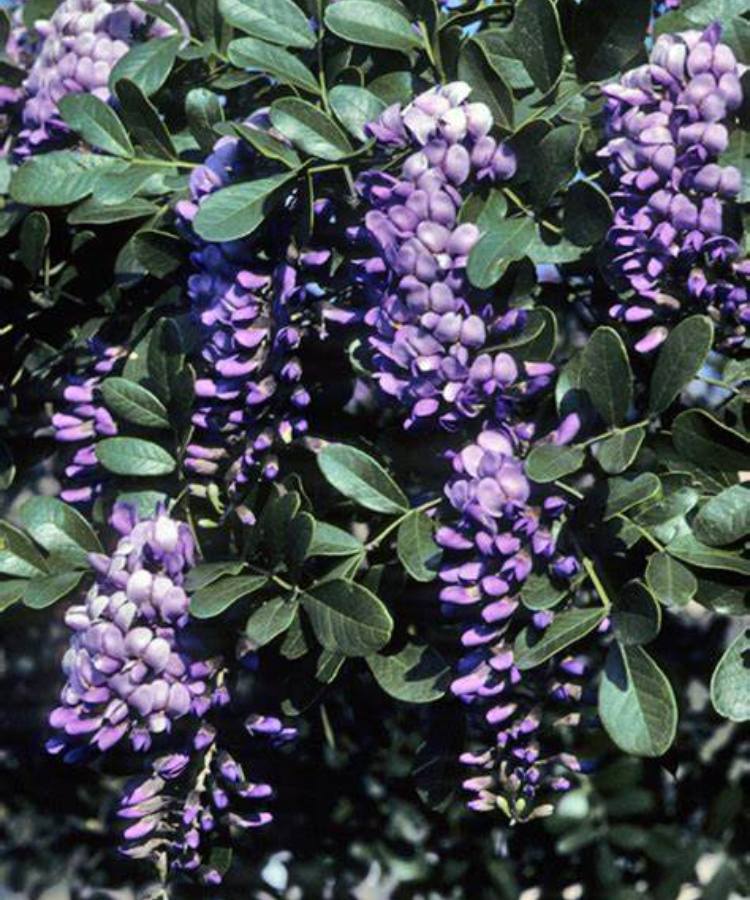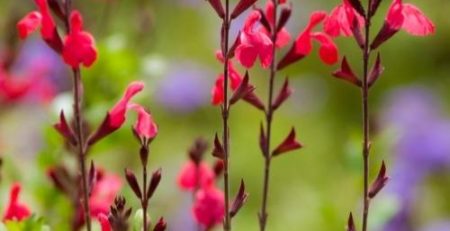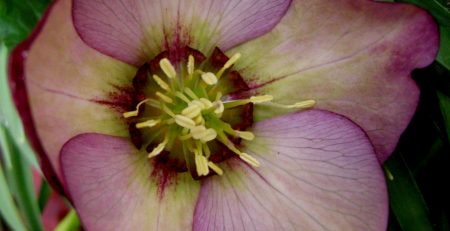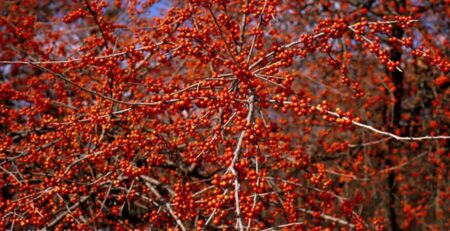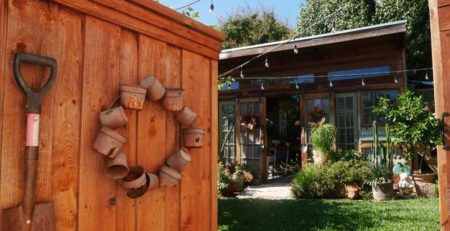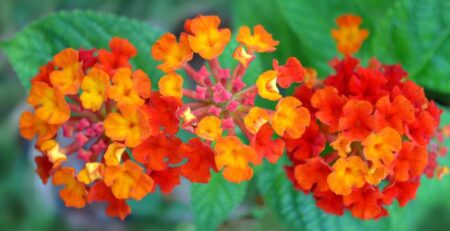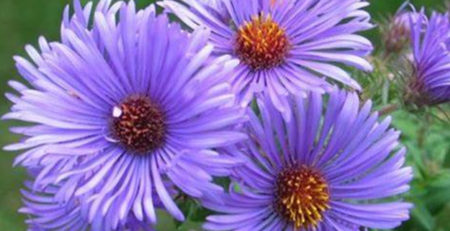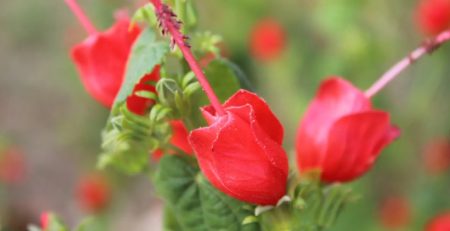Texas Mountain Laurel, Mescal Bean, Frijolillo
Plant Description:
Lusciously fragrant, violet-blue, wisteria-like blossoms create a gorgeous display against the glossy, evergreen foliage of Texas Mountain Laurel. An extremely showy member of the Fabaceae, or Pea family, the striking flowers dangle in heavy clusters from February through March, releasing a heady scent often compared to that of grape soda. Although toxic to humans and pets, the blooms entice butterflies, bees, and a variety of other friendly, beneficial pollinators to pay a visit to the landscape. They are followed in summer by fuzzy gray seed pods containing shiny red, orange, or burgundy seeds that, while extremely beautiful, are also dangerously poisonous. Fortunately, the pods are extremely hard and difficult to break open but must, nevertheless, be kept far out of the reach of children and pets. Providing a lush feel and year-round beauty to arid landscapes, Texas Mountain Laurel is a broadleaf evergreen featuring lustrous, leathery, obovate, pinnately compound leaves made up of 7-9 airy leaflets. The leaves are alternately arranged along slender branches that can be trained to grow into a multi-trunked small tree or pruned to remain shrub-like. Texas Mountain Laurel typically grows to a manageable height of 10-15 feet and just as wide, although it has been known to reach 32 feet if given lots of water. Native to the bushy slopes, plains, and dry, rocky, calcareous soils of Texas, Mexico, and New Mexico, this is a remarkably slow-growing, drought tolerant, and deer-resistant tree. It is cold hardy to 10 degrees Fahrenheit and perennial within USDA hardiness zones 8A-10B. This native evergreen prefers sandy, loamy, rocky, limestone but is not picky about pH levels and will grow in just about any well-drained soil under full sun. Texas Mountain Laurel makes an ideal small tree for sunny patios, courtyards, or other limited spaces where its fragrant spring blooms can be enjoyed at close range. Excellent in xeriscapes, it is also a lovely border specimen, street tree, or espalier, blending beautifully among other drought tolerant companions like Lady Banks Rose, English Lavender, Yarrow, Verbena, Rock Rose, or Lantana. In west Texas and Mexico, the plant’s shiny, colorful, lacquer-like seeds have been found in archeological sites dating back 6,500 years. They were discovered on clothing remnants or were strung to create ornamental necklaces and earrings. A narcotic powder released by crushing the seed was once used by indigenous people as a hallucinogenic drug during sacred rituals. The seeds were also boiled, crushed, and applied medicinally to treat earaches. Texas Mountain Laurel is known botanically by the name Sophora secundiflora. The genus Sophora is defined as “a shrub or small tree having pinnate leaves poisonous to livestock and dense racemes of intensely fragrant blue flowers and red beans.” The species name, secundiflora, translates to the phrase, “having flowers on one side,” in reference to the plant’s pea-like flowers. As long as children and pets are kept out of reach, Texas Mountain Laurel makes a spectacular addition to arid gardens where few other evergreen plants can easily thrive.
Common Name: Texas Mountain Laurel, Mescal Bean, Frijolillo
Botanical Name: Sophora secundiflora
Category: Tree (Ornamental)
Lifecycle: Perennial
USDA Symbol: SOSE3
Hardiness Zones: 8A – 10B
Sun: Full Sun (6+ hours of sun per day) , High Sun (4-6 hours of sun per day)
Water: Low
Soil: Adaptable
pH: Slightly Alkaline (7.4-7.8)
Height: 10 to 15 ft
Spread: 10 to 15 ft
Spacing: 10 to 15 ft
Growth Rate: Moderate
Maintenance: Low
Bloom Time: Spring
Bloom Color(s): Purple
Leaf Shape: Obovate
Leaf Arrangement: Alternate
Leaf Retention: Evergreen
Miscellaneous: Tolerates poor soil
Propagations List: Seed
Propagation & Planting:
Texas Mountain Laurel prefers rocky, alkaline, well-drained, soils, especially those containing limestone. It also does fine in clay, loam or sand when planted in a site receiving 6 or more hours of full sun daily, although it will tolerate some light shade. This drought tolerant shrub can be purchased online or from many local garden centers, especially those specializing in native plants. A planting hole should be dug slightly larger than the root ball before carefully placing the tree in the center with the root ball slightly above the ground, and backfilling with native soil. The tree should be provided with regular water for the first year, but once established, Texas Mountain Laurel is highly drought tolerant and requires little to no irrigation. Because mature trees develop a deep root system, they do not take kindly to transplanting. Seed can be directly sown into the landscape and should be buried about half an inch deep. Mature seeds have a very hard outer coating that must be scarified, or scratched with a knife or sandpaper, before planting. Texas Mountain Laurel does not propagate well from cuttings.
Plant Care:
Although Texas Mountain Laurel can survive on annual rainfall, newly planted trees need to be irrigated every few days for the first few weeks. For the best flowering, mature trees should be watered every 4-7 days throughout the first year of growth. Established plants flower best when watered once a week in the intense heat of summer, every 2-3 weeks in spring, and once a month in fall and winter, in the absence of rainfall. It is important to allow the surrounding soil to dry between each watering.
Fertilize:
Texas Mountain Laurel does not require fertilizer. However, in areas with poor soil, it may benefit from a light application of a 10-10-10 granular, slow-release fertilizer in spring, according to the directions on the product label.
Prune:
Texas Mountain Laurel can be pruned into a small tree form by removing low-growing branches. If grown in shrub form, it can be pruned for shaping during dormancy.
Pest & Disease:
While Texas Mountain Laurel is resistant to most pests and diseases, it is a favorite of the Genista caterpillar, which loves to feed on its leaves, new growth, and young seed pods. The tree should be checked often for these caterpillars, which can be removed by hand or, if necessary, treated with Baccillus thuringiensis (Bt) according to the directions on the product label.
PlantTAGG® is the most technically advanced mobile solution for helping gardeners learn about and care for their plants. PlantTAGG’s goal to educate gardeners blends seamlessly with the mission of the Master Gardener program to provide research-based horticultural information to the residents of Dallas County and beyond. To set up your own yard, download the PlantTAGG app.

